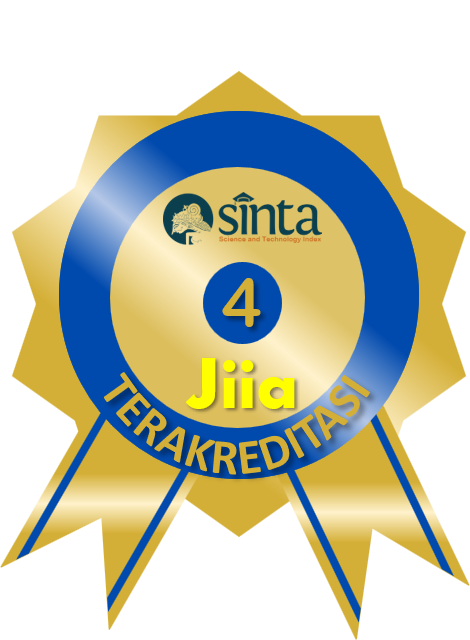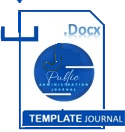PENGAWASAN PENGELOLAAN LIMBAH CAIR PADA INDUSTRI PENGOLAHAN KELAPA SAWIT DI KABUPATEN BANYUASIN (Study Empiris : Kecamatan Tanjung Lago)
DOI:
https://doi.org/10.33592/jiia.v10i1.612Abstract
This study discusses environmental monitoring which is an activity carried out directly or indirectly by the regional environmental supervisory apparatus to determine compliance with business and / or activity compliance with regulations in controlling environmental pollution. This research method uses qualitative research using the theory proposed by T. Hani Handoko (1995: 23) "Basic Oversight", namely: 1. Preliminary Supervision; 2. Supervision of Implementation; 3. Feedback Monitoring (After Implementation). Key informants were: Head of the Banyuasin District Environmental Agency, Head of Environmental Compliance and Capacity Building, Head of the Environmental Monitoring Section, Head of the Environmental Pollution Control Section, the Head of the Environmental Damage Control Section and the Company Management. The results of the research show that compliance with business and / or activities responsible for the regulation in controlling environmental pollution has problems, namely: the available budget is still limited for supervisory operational needs, the implementation of supervision in Banyuasin District seems slow and has not been implemented well apart from the lack of company compliance in reporting liquid waste management in Banyuasin Regency for that important role with stakeholders, namely the government, the community, and companies that produce waste is needed. Conducted joint supervision will have a very effective impact in overseeing industrial waste that will result in environmental pollution, while the company itself should periodically and continuously check the industrial waste produced
References
Arikunto, Suharsimi, 1998. Prosedur Penelitian Suatu Pendekatan Praktik.
Jakarta : Bina Aksara.
Bryant, Coraline and White, Louise G., 2004. Manajemen Pembangunan, Jakarta: PT Pustaka LP3ES Indonesia.
Departemen Pertanian RI. 2006. Pedoman Pengelolaan Limbah Industri
Kelapa Sawit. Jakarta
George R. Terry ,2000. Prinsip-Prinsip Manajemen. (edisi bahasa Indonesia).
PT. Bumi Aksara: Bandung.
Hasan M. Iqbal. 2002. Pokok – Pokok Materi Metodologi Penelitian dan Aplikasinya. Ghalia Indonesia (Anggota IKAPI). Yogyakarta.
Hasibuan Malayu. 2003. Manajemen (Dasar, Pengertian dan Masalah).
Bumi Aksara. Jakarta
Kementerian Lingkungan Hidup RI. 2013.Panduan Penanganan Air Limbah di Pabrik PKS. Jakarta
Koesoemahatmadja, R.D.H, 1979. Peranan Administrasi dalam Pembangunan, Bandung: PT Eresco.
Miles, Matthew B dan A. Michael Huberman, 1992. Analisis Data
Kualitatif. Jakarta: Penerbit Universitas Indonesia.
Nursanti, Ida., dkk. 2013.Pengolahan Limbah Cair Pabrik Kelapa Sawit Kolam Anaerob Sekunder I menjadi Pupuk Organik Melalui Pemberian Zeolit. Materi Seminar Nasional Sains & Teknologi V Lembaga Penelitian Universitas Lampung
Sawit Indonesia. 2014.Teknologi Pengolahan Limbah Pabrik Kelapa Sawit .http://www.sawitindonesia.com, diakses tanggal 5 November 2018
Semil, Nurmah.Dkk. 2014.“Buku Pedoman Penulisan Tesisâ€. Palembang :
Universitas Pascasarjana STISIPOL Candradimuka
Saparin, Sumber, 2005 Tata Pemerintahan dan Administrasi Desa, Jakarta: Ghalia Indonesia.
Siagian, Sondang P., 1988. Proses Pengelolaan Pembangunan Nasional, Jakarta: CV Haji Masagung.
Siagian, Sondang P., 1992. Kerangka Dasar Ilmu Administrasi, Jakarta: Rineka Cipta.














